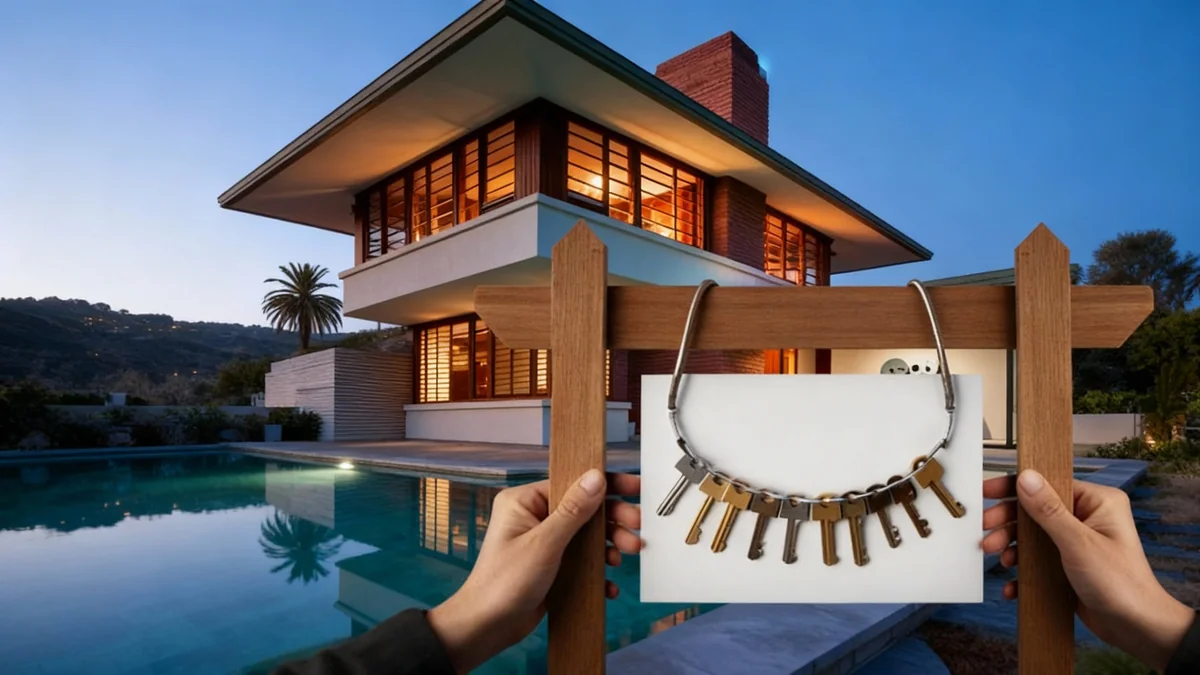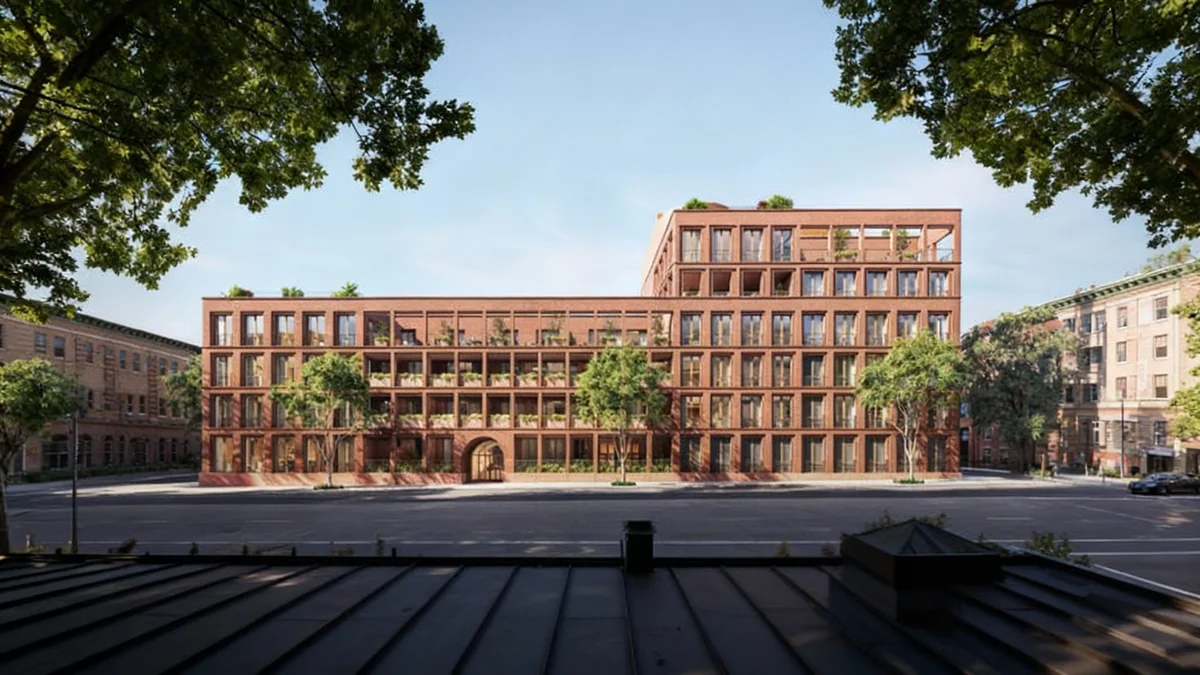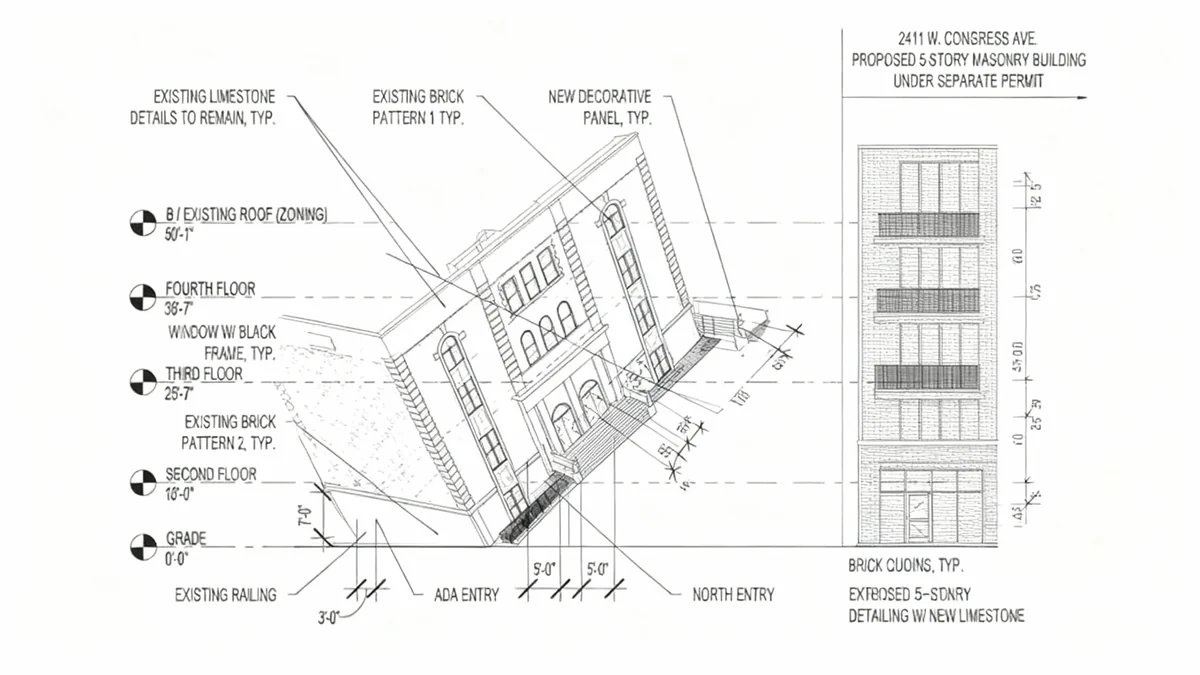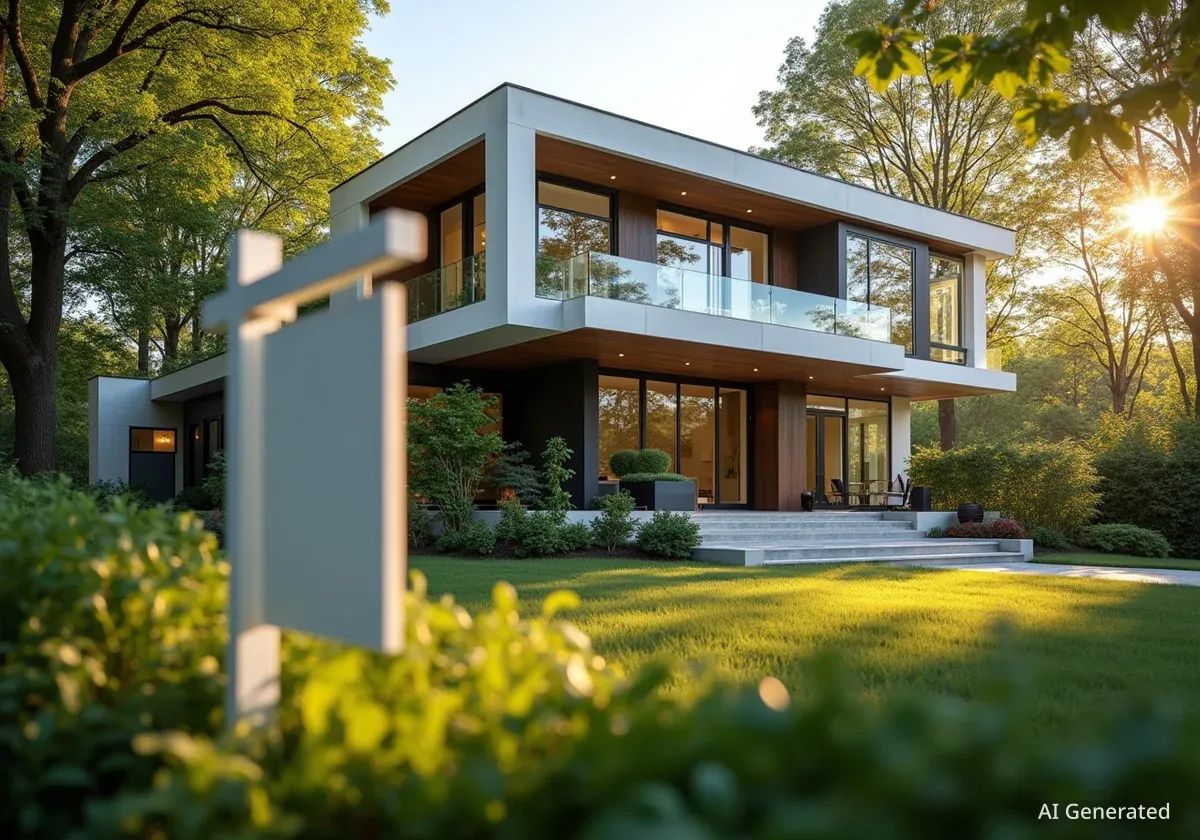The Alfred Newman House, a significant Lloyd Wright-designed residence once owned by actress Diane Keaton, recently disappeared from the Los Angeles real estate market after being listed at $10.4 million. This move follows a series of price adjustments and has prompted questions about the dynamics of selling architecturally significant properties in the current luxury market.
Built in 1948, the 4,400-square-foot home sits on 1.4 acres. It features five bedrooms, an outdoor kitchen, a pool, and a detached music studio. The property is renowned for its custom woodwork, geometric built-ins, and a distinct, steeply pitched roof, all hallmarks of Lloyd Wright's architectural style.
Key Takeaways
- The Alfred Newman House, designed by Lloyd Wright, exited the market at $10.4 million.
- Actress Diane Keaton previously owned and renovated the property.
- The house combines celebrity history with midcentury architectural significance.
- Market conditions, financing costs, and restoration demands influence buyer decisions.
- Sellers of high-value heritage homes often use strategic off-market approaches.
A Storied Past and Architectural Pedigree
The Alfred Newman House carries a rich history, commissioned by Oscar-winning composer Alfred Newman, known for scores in films like All About Eve. This commission allowed Lloyd Wright, son of the famed Frank Lloyd Wright, to explore experimental uses of brick and concrete within a residential design, while maintaining a sense of intimacy.
Diane Keaton purchased the property in 2007. She embarked on a personal renovation project, meticulously restoring the kitchen and reviving the original timber detailing. A notable change was reimagining the entire second floor into a spacious primary suite, complete with a brick fireplace, adding warmth to the private sanctuary.
Property Snapshot
- Size: 4,400 square feet
- Land: 1.4 acres
- Bedrooms: 5
- Architect: Lloyd Wright (son of Frank Lloyd Wright)
- Original Owner: Alfred Newman (Oscar-winning composer)
The Listing's Journey: From $13.25 Million to Off-Market
Keaton first listed the house in 2010 for $13.25 million. It eventually sold in 2020 for $9.25 million, reflecting a different period in the Los Angeles luxury real estate cycle. The current owner relisted the property in February of this year at $12.9 million.
The price was adjusted downward twice, most recently to $10.4 million. On September 30, the listing was removed from the multiple listing service without a sale. This withdrawal is not necessarily a sign of failure but often indicates a strategic shift by sellers in the high-end market.
"Sellers at this level often toggle between public listings and discreet, off-market conversations when they sense a mismatch between urgency and buyer sentiment."
Price History Overview
- 2010 First Ask: $13.25 million
- 2020 Sale: $9.25 million
- February 2025 Relist Peak: $12.9 million
- Last Public Ask: $10.4 million (before removal)
Why Buyers Hesitated
Several factors likely contributed to the property's pause in the public market. The luxury real estate landscape in Los Angeles has seen shifts, including changes in borrowing costs and an increase in prime inventory. Design-led homes, especially those with significant historical value, often face extra scrutiny regarding restoration scope and long-term maintenance.
The Alfred Newman House appeals to those who appreciate its intact woodwork and Wright lineage. However, some families may compare it to newer constructions that offer glass walls, integrated technology, and turnkey finishes. This property demands patience and an appreciation for craft, which might not align with every buyer's desire for immediate, frictionless living.
Key Market Influences
The current market presents a complex environment for unique properties. Buyers are more conscious of financing costs, which have settled above previous ultra-low rates. The availability of more luxury homes also means greater competition. For a house like the Alfred Newman House, its specific architectural demands and historical context add layers to the buying decision.
Seven Factors Shaping the Market Pause
- Pricing Memory: The 2020 sale at $9.25 million sets a baseline expectation, despite recent upgrades and market changes.
- Rate Reality: Higher financing costs impact affordability, particularly at eight-figure price points.
- Restoration Appetite: Wrightian woodwork and detailing require specialized care and time, a consideration for new owners.
- Layout Taste: The loft-like primary suite, while appealing to some, may not suit all buyer preferences.
- Comparables: Newer trophy homes often offer larger square footage, advanced technology, and immediate convenience.
- Seasonality: Listings in late summer to early autumn can encounter thinner buyer traffic.
- Strategy: Removing a public listing can create scarcity and facilitate targeted, off-market offers to specific collectors.
Diane Keaton's Enduring Architectural Legacy
Diane Keaton's connection to Lloyd Wright's work extends beyond the Alfred Newman House. In the 1990s, she bought and restored Wright’s 1928 Samuel Novarro Residence in Los Feliz, collaborating with architect Josh Schweitzer. That Mayan Revival home later sold in 2018 for just under $4.3 million.
Her pattern of acquiring, refining, and then selling these architectural gems highlights a collector's approach. She engages with these properties as personal projects, passing them on once her vision feels complete. Keaton's recent passing on October 11, 2025, at age 79, casts a reflective light on her profound impact on architectural preservation.
The Alfred Newman House stands as a testament to her legacy. Today's buyers of such homes weigh more than just ownership; they consider their role as stewards of a significant architectural story. This responsibility adds another dimension to the acquisition of heritage properties.
Navigating the Heritage Market
Architect-designed homes command value based on their scarcity, provenance, and condition. Successful owners of these properties typically budget for conservation as an ongoing investment. Specialists are crucial for maintaining historical integrity, from matching timber tones to sourcing period-appropriate hardware and ensuring proper lighting without compromising the home's character.
This dedicated labor enhances the property's value over time, especially when detailed documentation supports the restoration work. Sellers often adapt their marketing strategies between public visibility and private discretion. Public listings cast a wide net, while private approaches target specific collectors already familiar with a designer's work.
The most favorable outcomes occur when buyers are well-informed, prepared, and aligned with the unique demands of a heritage home.
Advice for Buying a Midcentury Original
For those considering a midcentury original, a clear plan is essential before committing. Heritage homes offer significant rewards but require attention and financial discipline. Here are some steps to consider:
- Commission a conservation-focused survey to assess the structure, original joinery, and any previous alterations.
- Allocate a contingency fund of 10-15% of the purchase price for specialist restoration work over the initial three years.
- Review insurance terms for historic elements like fabric, masonry, and bespoke glazing, especially earthquake coverage in regions like Southern California.
- Request all permits and plans for past renovations; undocumented changes can complicate future approvals.
- Engage craftspeople who possess a deep understanding of Wright-era detailing, as shortcuts can leave lasting marks.
When evaluating the price, prioritize the home's physical condition—roof, exterior, services, and joinery—before factoring in the premium for the architect and provenance. While markets fluctuate, rare design properties maintain their value, rewarding conviction and precise timing over hasty decisions.




